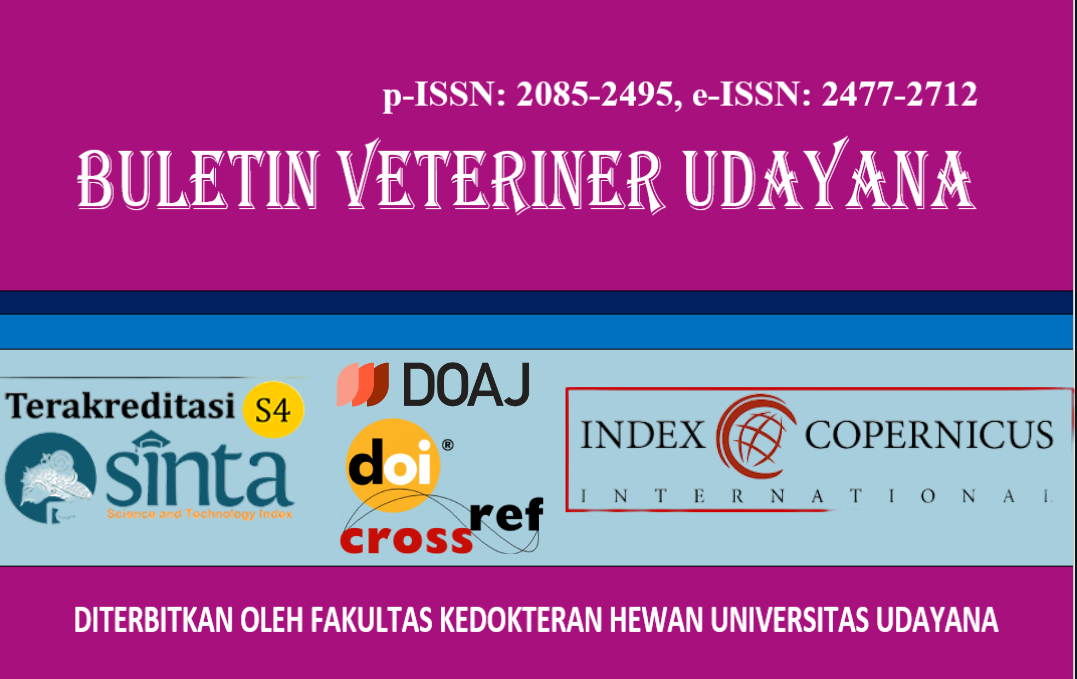OCCURRENCE OF ENCEPHALITIS AND HEPATITIS FROM COLIBACILLOSIS CASES IN PIGLETS
DOI:
https://doi.org/10.24843/bulvet.2024.v16.i05.p15Keywords:
pig, colibacillosis, e. coliAbstract
Pig farming management cannot be separated from various obstacles that can hamper the productivity of a farm, one of which is infection in livestock, both piglets and adult pigs. One of the diseases that can attack pigs is colibacillosis. Colibacillosis is an infection in pigs in the lactation and weaning phase caused by Eschenrichia coli. Infection of E. coli most cause disease and death in newborn and newly weaned pigs. This research aims to establish a diagnosis of the death of piglets originating from one of the farms in Catur Village, Kintamani, Bangli, Bali. The case pig is a Landrace type, 52 days old, weighing 4 kg, female and kept in a cage. The pigs started to look sick and had no appetite for approximately 1 week, totaling 26 pigs, including 3 sows and 23 puppies. A total of 5 piglets were sick for one week and 2 piglets were found dead. Dead pigs were examined for anatomical pathology, histopathological changes and isolation and identification of bacteria. In anatomical pathology and histopathology, the case animals experienced encephalitis, hemorrhagic pneumonia, hepatitis, hemorrhagic and necrotizing enteritis. The results of bacterial identification show on the media Eosin Methylene Blue Agar (EMBA) colonies appear metallic and shiny, round shape, smooth edges. Gram-negative rod-shaped bacteria, with biochemical tests such as Escherichia coli. Based on the anamnesis, epidemiology of the disease, post-mortem changes, visible lesions in several organs, as well as the results of isolation and identification of bacteria, the cause was diagnosed as Escherichia coli. Owners can prevent disease by maintaining pig farm sanitation.




